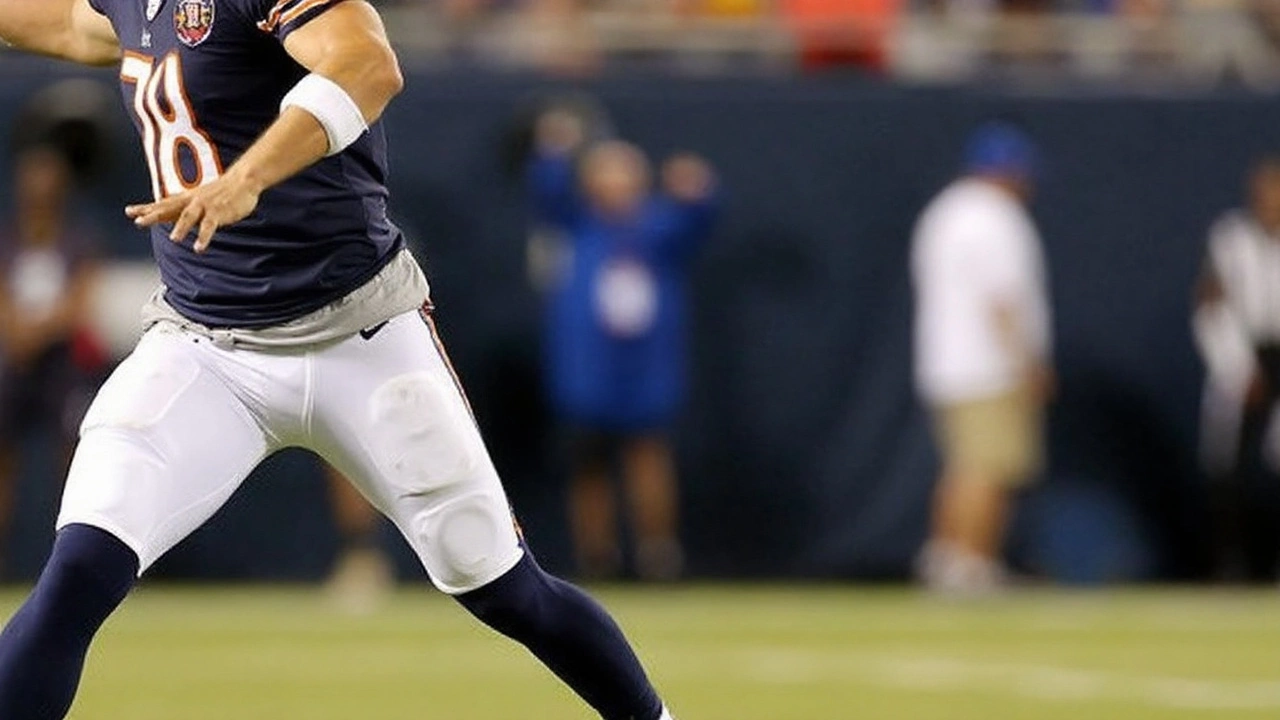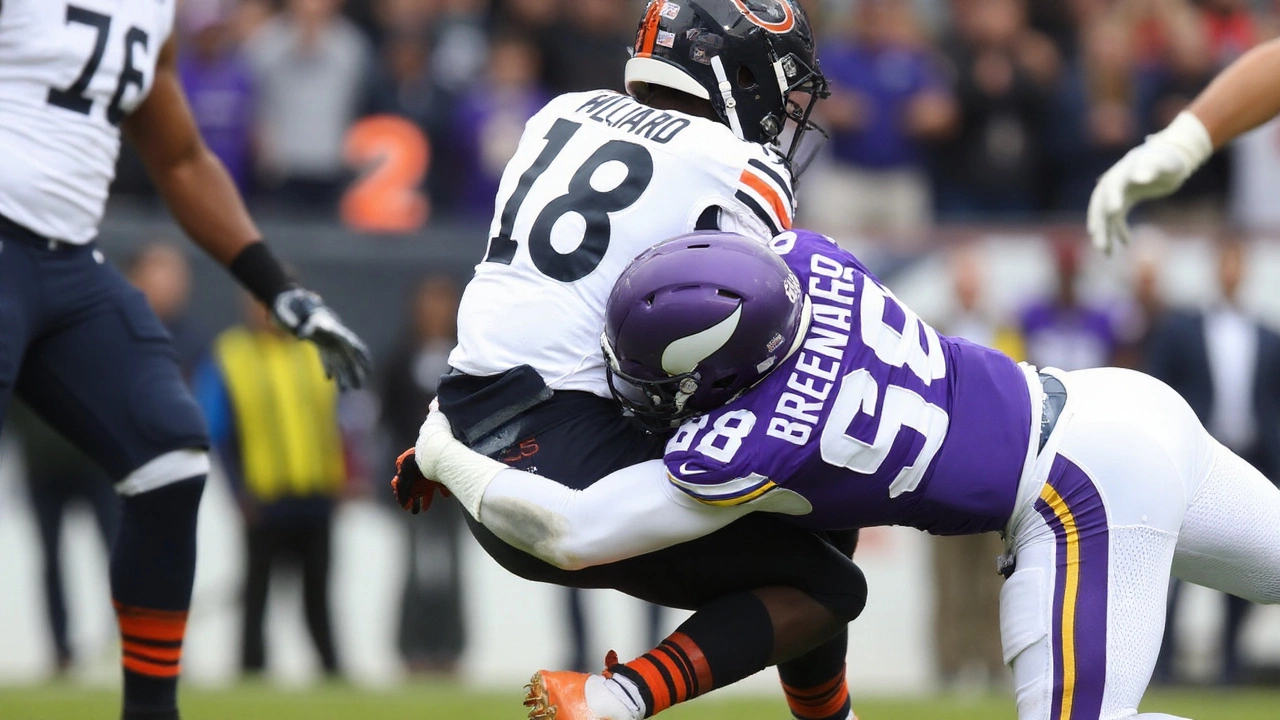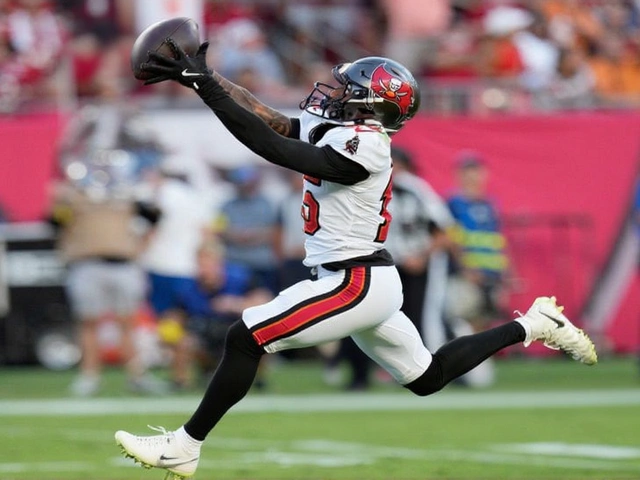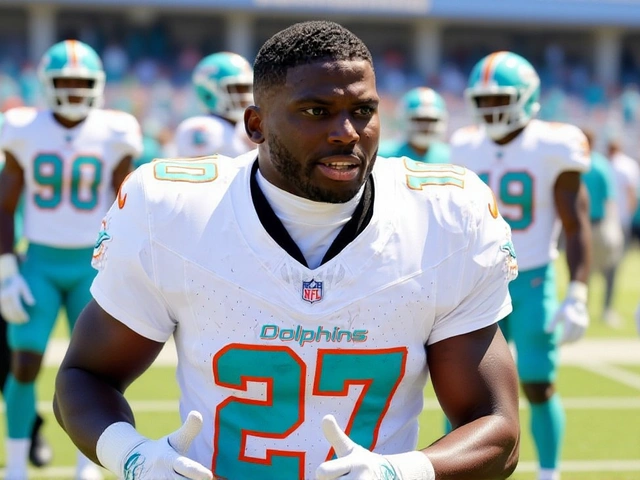A fourth-quarter swing that flipped the script
For three quarters, Chicago had everything where it wanted it: a primetime debut for new head coach Ben Johnson, a defense dictating tempo, and a quarterback in Caleb Williams who looked comfortable and in command. And then it all vanished in a 15-minute blur. The Minnesota Vikings scored 21 unanswered points in the fourth quarter to win 27-24 at Soldier Field, handing the Bears a gut-punch finish to a night that had set up as a statement.
This wasn’t a fluky bounce or a one-play miracle. Minnesota methodically turned field position, tightened up on defense, and unlocked quarterback J.J. McCarthy’s timing in the quick game. McCarthy finished with three touchdown passes, but it was the way he got there that mattered: quicker decisions, better rhythm, and poise when the pocket shrank. Kevin O’Connell’s offense leaned into tempo and high-percentage throws, and Minnesota’s patience in the run game kept Chicago’s pass rush honest just long enough for the comeback to take root.
Chicago’s offseason had set the stakes. The franchise invested across the board, hired Johnson to reset the culture, and doubled down on continuity by extending general manager Ryan Poles and core players. For most of the night, that vision showed up on the field. Williams hit his spots, moved chains with efficient reads, and delivered a key third-down strike to Rome Odunze that had the Soldier Field crowd roaring. The defense won early downs and corralled Minnesota’s explosives. Then the fourth quarter arrived, and Minnesota put its foot on the gas.
The turning point was obvious and still stung when the clock hit zero: a missed field goal by Cairo Santos that could have extended Chicago’s cushion. Instead, it cracked the door. Minnesota barged through it. The Vikings immediately capitalized with a short-field touchdown, and the feel of the game shifted from patient chess match to track meet.
From there, Minnesota stacked stops. The Vikings front mixed looks up front and disguised pressures that pushed Williams off his timing. Chicago’s offense, confident all night, suddenly felt rushed. Routes broke late. Throws sailed or arrived a beat behind. On the other side, McCarthy found his hot hand. Minnesota used condensed formations, motion, and play-action to stress Chicago’s rules. Nothing exotic—just a clean plan executed with urgency.
McCarthy’s first three quarters were steady but unspectacular. The fourth quarter was something else. He processed the field faster, trusted his first read when it was there, and used his legs just enough to keep plays alive without drifting into danger. On the touchdowns, you could see the progression: a quick hitter in the red zone, a layered throw against zone, and a tight-window dart that required confidence and timing. Those are grown-up throws, especially in a hostile building with the clock working against you.
Credit Minnesota’s defense for giving the offense multiple bites at the apple. The Vikings rallied to the ball, took away Chicago’s easy outlets, and forced the Bears to win with longer drives. That’s where the Bears stalled. Faced with second-and-long and third-and-medium, Chicago’s protection cracked just enough to disrupt rhythm. The result: punts, short fields for the Vikings, and a building that went from loud to nervy in minutes.
Johnson’s debut showed the outline of what he wants: motion to free releases, defined reads for Williams, and an aggressive defense that plays downhill. For three quarters, it worked. But closing out games is its own skill set. Chicago’s late-game sequence leaned conservative on early downs, which invited second-and-long and fed Minnesota’s pass rush. When the Bears did push downfield, Minnesota’s safeties held their water and the windows tightened. That, plus the missed kick, was the difference.
On the Vikings side, O’Connell’s staff kept leaning into a plan that preserved McCarthy’s confidence. The run game didn’t always break free, but it stayed on schedule. Screens and quick outs became layups that set up the deeper shots. Minnesota didn’t chase the game with low-percentage hero balls; it chipped away until the Bears broke contain.
There’s also the context of the quarterbacks. Both are second-year passers coming off learning-heavy rookie seasons. Nights like this are often about who adapts faster when the pictures change post-snap. Early, Williams had the sharper answers—especially on third down, where he used the middle of the field and leveraged Odunze’s routes to stay ahead of the sticks. Late, McCarthy owned the matchup. He identified leverage quickly and put the ball out on time, taking what the defense gave and punishing cushion with precise placement.
Special teams swung it, too. A make from Santos likely cools Minnesota’s urgency and forces them into a slower hunt for points. A miss did the opposite. It energized the Vikings sideline, muted the crowd, and tilted momentum. Those are the hidden yards and hidden emotions that matter in close games.
- Cairo Santos’ missed field goal opened the door for Minnesota’s first fourth-quarter touchdown.
- The Vikings scored 21 straight points in the final frame to erase a multi-score deficit.
- J.J. McCarthy threw three touchdown passes, saving his best reads and ball placement for the fourth quarter.
- Chicago’s offense went scoreless in the fourth, struggling with protection and timing as Minnesota disguised pressures.
- Minnesota’s defense kept the game within reach for three quarters, setting up the late flurry.
As for the NFC North picture, this was a tone-setter. Road wins in the division are gold, and Minnesota banked one out of the gate. The Vikings moved to 1-0, a clean start in a year where every margin matters. Chicago dropped to 0-1, but the bigger story is how the Bears respond. The blueprint for three quarters looked like the plan Johnson sold in the spring: attack space, simplify reads for the quarterback, and let the defense play fast. The Bears can live with that identity. What they can’t live with is melting when the game tightens in the fourth.
There were positive takeaways for Chicago beyond the sting. Williams’ early sequencing was crisp, and his chemistry with Odunze showed up in leveraged routes and timing on the boundary. The defensive front set edges and rallied to the ball with discipline. The Bears didn’t get beaten over the top until the game state forced them into softer coverage. But situational football—two-minute defense, four-minute offense, and special teams—decided this one. That’s coachable, and Johnson’s staff will spend the week coaching it hard.
For Minnesota, the message is straightforward: the plan travels. Keep McCarthy in rhythm, pair the pass with a stubborn run game, and let the defense compress space in the red zone. The Vikings didn’t need a 60-minute fireworks show. They needed to be close when the fourth quarter started. They were. And when the chance came, they didn’t blink.
The way McCarthy handled Chicago’s late pressure looks sustainable. He took the freebies and didn’t force throws into bracketed coverage. He climbed the pocket rather than drifting into edge rushers. He slid protections cleanly and trusted his checkdowns when deep shots weren’t there. Those are the small, veteran habits that win tight games in November and December—habits you want to see taking hold in Week 1.
One more thread: Minnesota’s defense tackled well in space as the game wore on. Early, Chicago won yards after the catch. Late, those plays got bottled up for modest gains. That discipline turned PBU chances into punts and forced Williams to hold the ball an extra count. When that happened, Minnesota’s front cashed in. Even without gaudy sack totals, the pressure was timely and disruptive.
In a league that flips weekly, neither team will treat this as a verdict. But it is a reveal. The Vikings showed they can take a punch on the road and still control the final act. The Bears showed promise in structure and personnel but have to finish drives and drives-that-end-games. Johnson’s debut had the crowd believing—and for long stretches, it was justified. He will be judged on the fourth quarter, though, because that’s where seasons are built.
And for anyone keeping tabs on prime-time narratives, this game delivered. Two young quarterbacks, a divisional stage, and a fourth quarter that felt like a different sport. McCarthy and Williams will see each other again, and when they do, the tape from this one will be the first thing their coaches pull up. Minnesota will study how it found answers late. Chicago will study how those answers became problems it didn’t solve in time.
It’s only Week 1, but in the NFC North, these are the inches that add up. Minnesota grabbed them. Chicago let them slip. On a cool night by the lake, the Vikings stole a road win and a head start in the division race, the sort of early-season swing that tends to matter when tiebreakers get tight.

What it means for both teams
For Minnesota: road composure, quarterback growth, and clarity on how to support a young passer. The Vikings will like how their plan scaled late without panic. Winning ugly on the road is usually a marker of a playoff-caliber team. The next step is avoiding the hole in the first place.
For Chicago: the debut showed a workable identity and a roster that can dictate for long stretches. The homework is late-game management, protection rules when defenses heat up, and special teams execution under pressure. The Bears can take heart from the first three quarters, but the standings only remember the last one.
That’s the lesson from Week 1 under the lights on Monday Night Football: it’s not just how you start; it’s how you answer when the momentum turns and the clock starts sprinting. Minnesota answered. Chicago ran out of answers.

 UN Approves 5,550-Person Gang Suppression Force for Haiti After U.S.-Kenya Push
UN Approves 5,550-Person Gang Suppression Force for Haiti After U.S.-Kenya Push
 Buccaneers Turn to Rookie Emeka Egbuka as Receivers Injuries Loom
Buccaneers Turn to Rookie Emeka Egbuka as Receivers Injuries Loom
 Dolphins stick with Tyreek Hill as knee injury derails trade hopes
Dolphins stick with Tyreek Hill as knee injury derails trade hopes
 What are the digital marketing strategies for small business?
What are the digital marketing strategies for small business?
 Pedro Neto and Enzo Fernandez strike as Chelsea crush Burnley 2-0 in Premier League
Pedro Neto and Enzo Fernandez strike as Chelsea crush Burnley 2-0 in Premier League